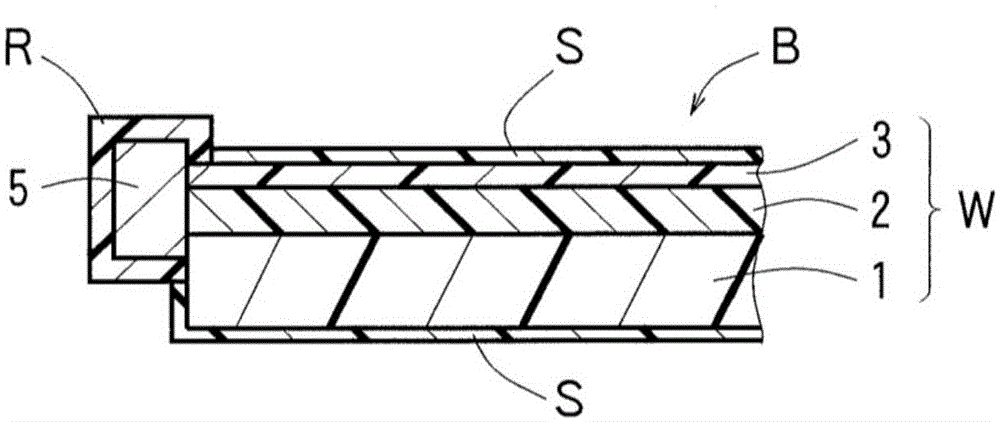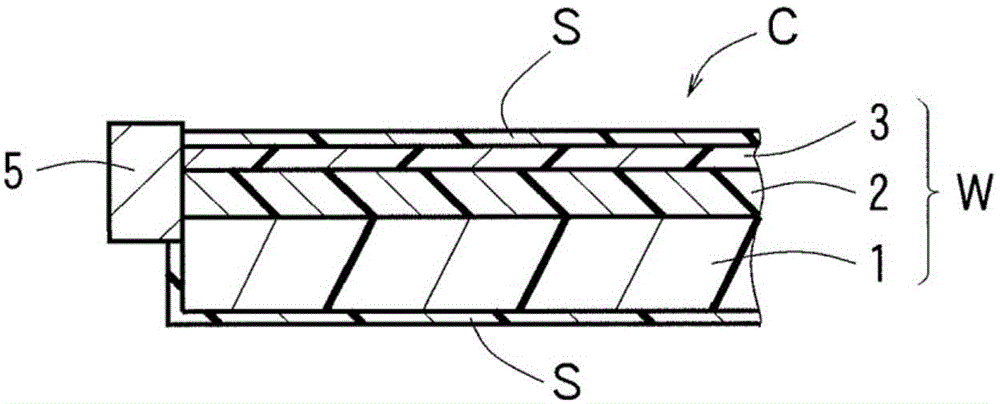Position sensor
A sensor and part technology, applied in instruments, light guides, optics, etc., can solve the problem of inability to detect accurate pressing positions, and achieve the effect of improving detection accuracy
- Summary
- Abstract
- Description
- Claims
- Application Information
AI Technical Summary
Problems solved by technology
Method used
Image
Examples
Embodiment
[0041] As a position sensor, a device whose entirety is covered with a light-shielding layer is prepared (refer to figure 1 (a), (b)). That is, the upper surface of the upper cladding layer of the position sensor is coated with a light-shielding sheet (75 μm in thickness) by means of a double-sided adhesive tape (25 μm in thickness), and the lower surface of the lower cladding layer is covered by a light-shielding sheet (75 μm in thickness) by means of a double-sided adhesive tape (50 μm in thickness). A light-shielding plate (thickness 1 mm) is covered, and the outer surface of the light-emitting element and the outer surface of the light-receiving element are covered by a light-absorbing resin layer. In addition, the end face of the core, the light-emitting element, and the light-receiving element are bonded using ultraviolet curable resin. The forming materials and the like of each structure are as follows.
[0042] (light shielding layer and double-sided tape)
[0043]...
PUM
 Login to View More
Login to View More Abstract
Description
Claims
Application Information
 Login to View More
Login to View More - R&D
- Intellectual Property
- Life Sciences
- Materials
- Tech Scout
- Unparalleled Data Quality
- Higher Quality Content
- 60% Fewer Hallucinations
Browse by: Latest US Patents, China's latest patents, Technical Efficacy Thesaurus, Application Domain, Technology Topic, Popular Technical Reports.
© 2025 PatSnap. All rights reserved.Legal|Privacy policy|Modern Slavery Act Transparency Statement|Sitemap|About US| Contact US: help@patsnap.com



